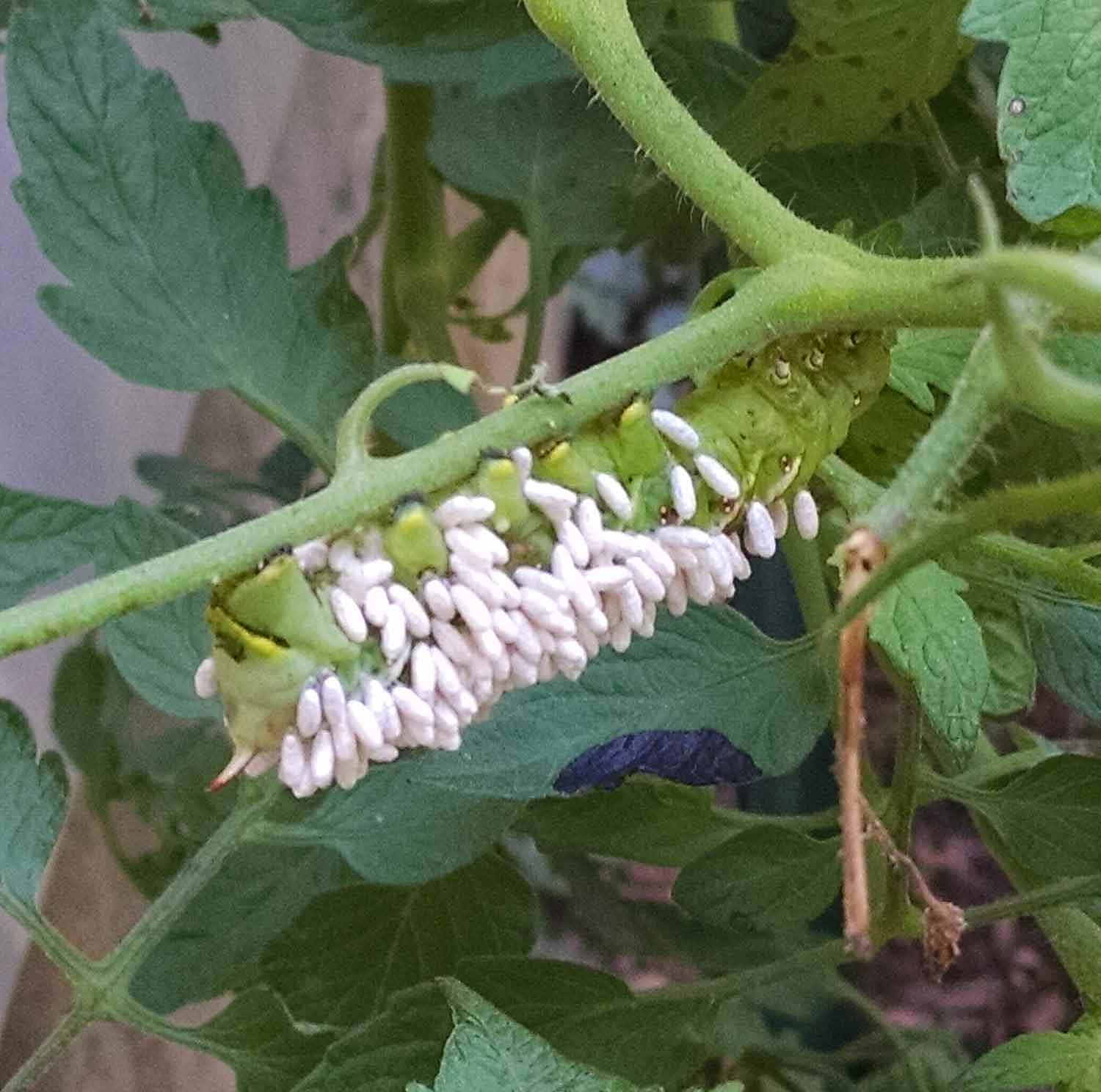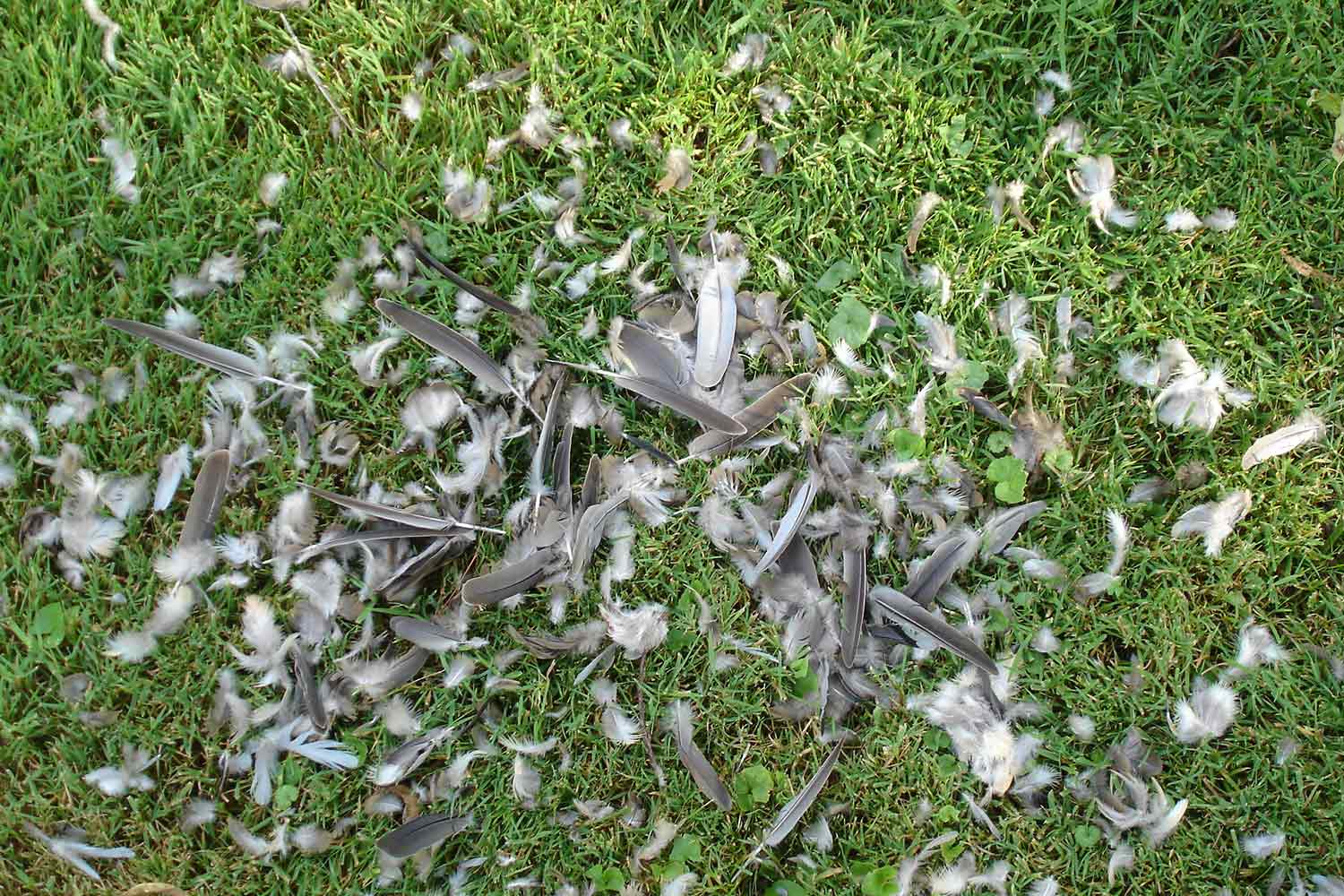A humorous look at some of the challenges I’ve had in my vegetable gardens over the years. At least, humorous in hindsight.

When you love doing something — especially if it’s a hobby, and the pressures of economics and efficiency take a backseat to the joy and sense of accomplishment it brings — it’s natural to want to share that love with everyone.
I feel that way about vegetable gardening, and each post on this blog gives me a few thousand words or so to try to convince you to grow something.
Such sales pitches are full of superlatives and bright, shiny positives. That’s why they work, right?
And most are true — basil really is easy to grow, and garlic is even easier — but sometimes life in the garden is … well, we polish up the tarnished spots and put their best faces forward, because while it’s not all wine and roses every day, the effort of growing fresh food is always worth it.
And despite the title of this story, that’s where I need to bring y’all around to: Knowing the thrill and satisfaction that walking out into your backyard and picking ingredients for dinner brings.
And joining the community of home gardeners, small farmers, and cottage producers who care deeply about where our food comes from and how it’s produced.
Soooooo, I quickly skirt around the fact that those amazing heirloom tomatoes that everyone wants to grow and eat — the Cherokee Purples, Brandywines, and Black Cherries — will have many, many eyeballs on them once they begin to fruit. Very few of them human. All of them hungry.
Which brings up another thing about a long-time hobby: You build a sturdy shield of selective forgetfulness when it comes to the problems that crop up in the garden.
As we accumulate these experiences season after season, we categorize them by their catastrophic potential: field-leveling wind-shear (heartbreaking); aphid infestation on a tomato plant (merely shoulder shrug).
With each passing year, perspective and (I hope) wisdom recategorize more and more of these hobby problems down the catastrophe ladder towards shoulder-shrug status.
One side effect of that, however, is that we veteran gardeners inadvertently downplay the frustrations of new gardeners. It’s not that we’re not sympathetic, it’s just that the shock of a deer completely stripping fruit from a tomato plant in 15 minutes wears off once we understand that sometimes this is just what happens. You learn the lesson, make improvements, and keep moving, as with everything in life.
So, as a break from the shiny sales pitch, I wanted to share some of the very real and sometimes not-so-Instagram-perfection-worthy — although always interesting — moments in my home vegetable garden.

Winged Wonders and Creepy Crawlers
It’s not an exaggeration to say that in some summers, my vegetable garden looks like a battle zone. Aerial assaults and covert ground operations occur daily amongst the greenery — some good for the gardens, some not so much.
It’s fascinating, though — all of it, the predator-prey hierarchy. Nature does her best to balance things out: For every bug that devours, say, tomato leaves, there’s another bug that devours that bug.
Since I maintain organic gardens, I generally let things play out on their own, except where a strong spray of water or an icky session of hand-picking (e.g., cabbage worms on kale) speeds along the resolution.
Scales of Injustice
My beautiful potted blood orange tree succumbed in year three to cottony cushion scale, one of the most bizarre-looking insects I’ve ever seen.
Reddish-brown and about the size of a tick, these insects attach themselves to leaves or stems and begin producing a sticky, pure white waxy substance that soon covers their entire body. A grooved egg sac then grows from its backside, extending the length of the creature up to an inch, like a bullet train.
I kept the young tree outside in the summer in a spot that I rarely passed, and when I did, my perspective on the small tree was from above.
Like most insect activity, all of the mischievousnesses occurred from underneath, on the backs of leaves, and along stems.
It was only when I spotted a wayward sprout below the graft and sat down to clip it away that I noticed the infestation. I don’t know what it is, but watching this colony makes my stomach do a slow roll. I’ve never seen anything like it.

An import from New Zealand, this scale heavily favors citrus trees. Its newly hatched nymphs can spread from plant to plant via the wind — and, indeed, ended up on my mint clear across the yard. (It survived, though. Nothing takes down mint).
Chemical controls are of little use against this particular scale, and none of the other insects in my yard were the least bit interested. (I learned later that the ladybird beetle is a highly effective biological control and had once saved California citrus groves from utter destruction.)
Since my tree was already over three years old, it’s safe to say that the insect had not arrived with the tree. My best guess is that, since the local climate doesn’t support growing citrus groves from which scale could easily spread in the wild, I must have purchased some plant from a nursery selling fruit trees infested with cottony cushion scale that hitched a ride home with me.
A Brief Reprieve
I lost the scale battle with my orange tree, but as I said earlier, Nature has a way of balancing things out.
Of Wasps and Mantids
I have a great affection for fuzzy bees and, along with the bee-friendly herbs and perennials I keep in my yard, I’ve been known to leave shallow, pebbled-lined dishes of water around the bee hangouts at the height of summer, to encourage their return. Such is my love of bumbles and honey bees.
I also, however, have an enormous fear of smooth-bodied wasps and hornets (who, I’m certain, know this and enjoy buzz-bombing me without stinging whenever I’m in the garden. If insects had their own TikTok accounts, I’d be a series of viral videos, what with all the screaming and arm-flailing).
So, while I know about the heroics of parasitic wasps — highly beneficial insects that keep other troublemaking garden insects in check — I’ve never been brave enough to turn any kind of attention to their efforts.
Anyway. Despite decades of growing tomatoes, I’d never had a tomato hornworm infestation until 2014. I had begun to notice an increase in what I thought were young paper wasps around my yard (and also — gulp! — in my house). They had that lazy, dangling-legs manner of flight, but they were very small and completely uninterested in torturing me.
Then, I spotted my first hornworm. They’re hard to miss. At 4″ long and about as thick as your index finger, these bright green caterpillars can decimate a tomato plant in no time.
But this caterpillar was not quite like the photos I had seen: It had what looked like grains of rice stuck upright all over its back.

Some quick research revealed that the braconid wasp — the little mini wasps I had noticed earlier — had already taken care of my hornworm problem before I even knew I had a problem.
Braconid wasps search for prey, like the tomato hornworm, and lay eggs just under its skin. When the larvae hatch, they use the hornworm as their own personal buffet table, eating it alive from the inside out before forming the rice-grain cocoons, where they pupate to wasp adulthood.
Gruesome, but effective.
Fierce Warrior
I grew my first grafted cucumber that year, whose vines reached an amazing 12 feet long.
I was puzzled, however, by the plant’s seemingly complete resistance to cucumber beetles (compared to my other cucumbers across the yard), until I found the cause: A stately praying mantis had taken up residence on the plant.

She remained all summer long, perched high with a view, and that plant was as healthy as can be, without a single foe ever to be found on it.
Small victories. Way to have my back, Nature.
Trouble Brews
I have a moderate problem with slugs. There are plenty of places in my yard for them to thrive and hide from predators. And in the unfortunate instance when I sow seeds near them, producing delicious, irresistible, slug-sized seedlings, they, well … slugs gotta be slugs. Chomp chomp.
The truth is, slugs are both beneficial and a pain in the behind. The unpickiest of unpicky eaters, they will consume both fresh greenery and dead insects with equal aplomb.
They are, in fact, highly efficient composters and will happily munch rotting leaves until some plant that I’m personally excited about comes along.
One year, though, they pushed all of my buttons by taking down an entire bed of carrot seedlings in an overnight gorge fest. The whole thing!
Salting and poisoning are out of the question. After a long internal argument between my all-creatures-great-and-small conscience and my carrot-loving inner cook, I decided that drowning was the lesser of many evils.
I half-buried tubs of beer around the bed near slime trails, which came from every direction. Meaning, there were a lot of little tubs. This is an important detail.
The next morning, I awoke to a bizarre scene near the carrot bed.

Feathers. No blood, no gore. Just, feathers. Lots and lots of feathers.
All of the beer tubs were dug up and missing. The carrot bed was potholed, mulch thrown everywhere. A heavy, potted petunia was knocked over on the deck nearby.
What the what?
And then I spotted the muddy prints on the driveway that wraps around the back of my house: raccoons. I had forgotten about the raccoons.
They love beer more than slugs do.
Highly dexterous and nimble-fingered, I imagined the crazy fraternity of raccoons skittering sideways out of my yard before daybreak, each clutching their own personal tub of PBR and a trophy feather.
I hope they had the worst hangover, ever.
Furry Woodland Creatures
So, I still have slugs, and I still have raccoons.
After the beer incident, the raccoons quieted down. Until I began growing sweet corn.
When corn near ripeness, it becomes a mildly nerve-wracking game of when to pick the corn. You want full ears with plump kernels, but too long on the stalk and the natural sugars begin to turn starchy.
Worse, delaying after picking really accelerates the starching process, which is why grocery store corn leaves so much to be desired.
Indeed, if you listen to Martha Stewart once too often on the subject, as I did, she’ll have you paranoidly convinced that there’s a five-minute window of perfection, beyond which the ears are utter garbage (ptooie!).
It’s best that you pick those dinner ears and head for the house at a full sprint, handing them off to a fresh runner halfway through, if you’re not in prime corn-transporting shape.
Rocket Loves Corn. Apparently.
Then there are the raccoons. Their measure of corn-picking perfection is acutely attuned to mine … minus one day.
Any ear that I pegged for the next day’s harvest was snatched overnight.
Oh, it didn’t start out that way. I had a good half dozen ears of perfection, lulled into a false sense of sweet corn picking security.
And then I came out one morning to a stripped stalk, corn leaves and silk flung everywhere. It became a fevered game. Sometimes I won. Sometimes I won by cheating (picking an ear before fully developed).
Mostly, I lost, and just to make sure that I knew I was losing, the raccoons would leave me this note each morning:

They plowed through two stands of corn in opposite ends of the yard in a matter of weeks.
Feelin’ Squirrely
As bad as the raccoons are, the cruelest animal in my yard is, by far, the squirrel. I love sweet corn, but I love my heirloom tomatoes so much more. And most of all, my cherry tomatoes. And so do the squirrels.
Where raccoons are wily and raucous, squirrels are arrogant and mocking.
This crazy light show, visible 20 miles away in all directions, was the intense electrical arcing of a Duke Energy substation that had exploded. Thousands of residents were without power for hours in the middle of winter, while they worked to put out a dangerous fire and reroute power. (Yes, I was one of those residents.)
The culprit of all this havoc? One squirrel.
My tomato gardens are fully fortressed against the army of tomato-devourin’ deer that live in my suburb, and caged to the hilt to support the plants’ gigantic heights (often over 15 feet).
This matters not. Squirrels have narrow, flexible bodies that can squeeze through the smallest of spaces, and they’ll climb alarming heights and make heart-stopping leaps to get to what they want.
And what they want are my cherry tomatoes. They prefer heirloom Black Cherries, but they’ll settle for Sun Golds or, in a pinch, Matt’s Wild Cherry or Sweet 100’s.
Squirrels dart about the yard, playing their squirrel chasing games, and then take a breather by perching themselves on my tomato cages and reaching through the wire to snatch the closest cherry from the vine.
Cherry tomatoes are the perfect paw-sized treat, and they hold them like beach balls to suck out the innards, letting the skins fall to the ground, like the rudest house guests ever.
Tomato cages are just a wide open door. Nets, they simply chew through. Chicken wire is a minor obstacle on the road to tomato bliss.
Short of wrapping my plants like Christmas presents with electrified hardware cloth — which I’m not going to do — there’s no reasonable defense. So, I’ve had to resort to growing more plants than I need with the hope that they’ll leave me a few pity tomatoes each day.

Obviously, I don’t have the perfect plan to protect my gardens from Animal Armageddon. But I have yet to have a year where growing my own vegetables hasn’t been 100% worth it (even the carrot incident: I simply reseeded elsewhere and now keep my stash of Rhinegeist to myself).
And that’s the message I want to convey with all truth intact: it’s worth it. Absopositivelyfreakinlutely worth it.
That first bite of the first heirloom tomato of the season — pure heavenly bliss.
But one thing I do know: if Ohio ever legalizes marijuana, I can guarantee I won’t be growing it.
A profitable side venture? Possibly.
But stoner raccoons with the munchies in my vegetable garden? Immediately no.

 Welcome! I'm Karen, Chief Gardener, Tool Cleaner, Tomato Pruner, and Cabbage Worm Picker-Offer.
Welcome! I'm Karen, Chief Gardener, Tool Cleaner, Tomato Pruner, and Cabbage Worm Picker-Offer.
Omg, those raccoons! That corn stalk made me lol (sorry!) I have the same problem with chipmunks and tomatoes. Those little suckers fit through *everything*
One year, I hung a bird feeder in the backyard for the songbirds. The squirrels spent their days trying to defeat the squirrel-proof label (which they ALWAYS did), and refueled in the tomato gardens. But then the chipmunks moved in, attracted to the seed. I thought I was going to lose my mind, and actually had to skip the next year’s tomato crop because I literally had no tomatoes once the chipmunks showed up. Red, orange, green, they didn’t care, they chomped everything. Took years for them to move on. I’m still not recovered.